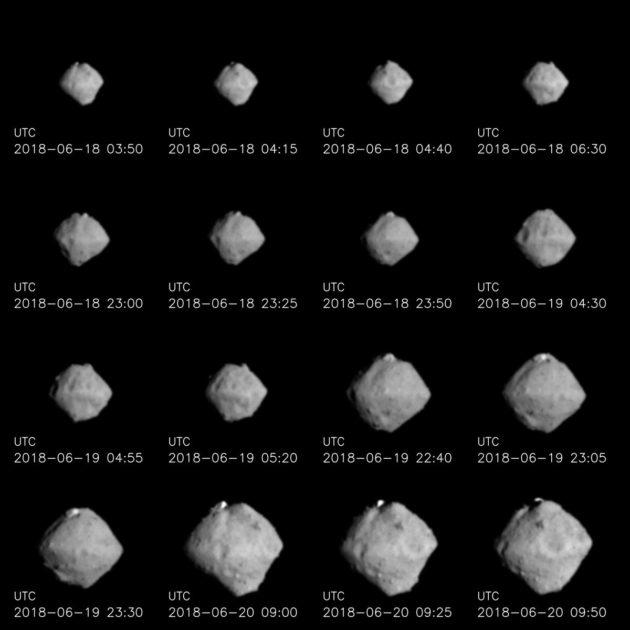Japan’s Hayabusa 2 probe closes in on asteroid Ryugu – and captures close-ups

Look! Up in the sky! It’s a dumpling … It’s a “Star Trek” Borg cube … It’s the asteroid Ryugu!
Our view of Ryugu, a half-mile-wide space rock nearly 180 million miles from Earth, is coming into sharper focus with the approach of the Japanese probe Hayabusa 2.
Three and a half years after its launch, the spacecraft is now within 35 miles of the asteroid, closing in on what’s expected to be a standoff orbital distance of 12 miles. The pictures that it’s been sending back throughout the approach provide enough detail to reveal Ryugu’s blocky shape.
“It looks like… a dango-type asteroid! (Actually, that’s a Japanese sweet dumpling. But the shape seems to be similar so far…),” the mission team tweeted last week.
The images reminded German science writer Daniel Fischer of something more ominous: the cube-shaped starship inhabited by the nefarious Borg collective in the “Star Trek” sci-fi tale. “To keep crucial shocking details from most of the world the caption exists only in Japanese,” he joked in a tweet.
As the asteroid mission proceeds, more space fans are sure to be assimilated. Around the end of July, the probe is due to descend to a distance of just a few miles, according to the schedule laid out by the Planetary Society’s Emily Lakdawalla. In August, it’ll go even closer, to 0.6 miles (1 kilometer).
All this is a prelude to the main event: Over the course of the following year, Hayabusa 2 will make a series of touchdowns on the asteroid’s surface to gather samples. Small landers and a German-built rover known as the Mobile Asteroid Surface Scout, or Mascot, will be deployed to make on-the-surface observations.
Around the end of 2019, Hayabusa 2 will leave Ryugu, and by the end of 2020 it should be back at Earth to drop off its samples.
Hayabusa 2 follows up on the first Hayabusa probe, which made a similar cosmic trek to collect samples from the asteroid Itokawa in 2005. Those samples were returned in 2010 after a journey that turned out to be more complicated than expected, due to technical problems.
NASA is in the midst of its own asteroid sample return mission, OSIRIS-REx. That probe is due to rendezvous with the asteroid Bennu in December, conduct a detailed survey, and return samples to Earth in 2023.
More from GeekWire:
It’s Asteroid Day! Scientists look on the bright side of our cosmic shooting gallery
NASA shows off a drive-by snapshot of Earth from OSIRIS-REx asteroid probe
Asteroid fans get psyched up over NASA’s new Psyche and Lucy space missions
Astronomers give their official blessing to the first batch of place names on Pluto

 Yahoo News
Yahoo News 